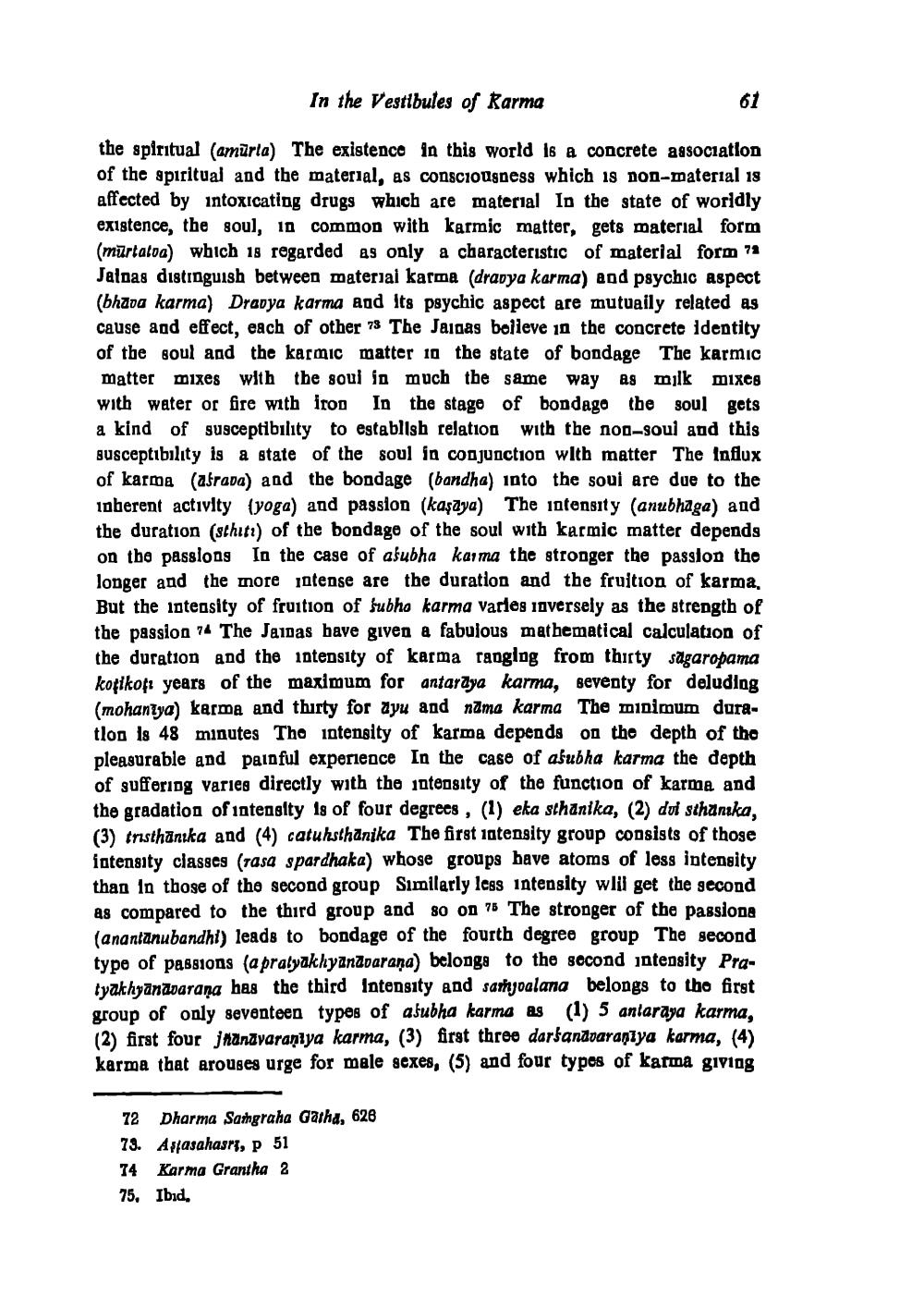________________
In the Vestibules of Karma
61
the spiritual (amūrla) The existence in this world is a concrete association of the spiritual and the material, as consciougness which is non-material 18 affected by intoxicating drugs which are material in the state of worldly existence, the soul, 10 common with karmic matter, gets material form (murtatoa) which 18 regarded as only a characteristic of material form 71 Jalpas distinguish between material karma (drapya karma) and psychic aspect (bhada karma) Drapya karma and its psychic aspect are mutuaily related as cause and effect, each of other 73 The Jainas bolleve 10 the concrete identity of the soul and the karmic matter 10 the state of bondage The karmic matter mixes with the soul in much the same way as milk mixes with water or fire with iron In the stage of bondage the soul gets a kind of susceptibility to establish relation with the non-soul and this susceptibility is a state of the soul in conjunction with matter The Influx of karma (abrana) and the bondage (bandha) into the soul are due to the inherent activity (yoga) and passion (kaşaya) The intensity (anubhaga) and the duration (sthiti) of the bondage of the soul with karmic matter depends on the passion. In the case of abubha karma the stronger the passion the longer and the more intense are the duration and the fruition of karma, But the intensity of fruition of fubho karma Varles inversely as the strength of the passion 74 The Jaidas have given a fabulous mathematical calculation of the duration and the intensity of karma ranging from thirty sägaropama kotikof years of the maximum for antaraya karma, seventy for deluding (mohantya) karma and thirty for ayu and nama karma The minimum duratlon is 48 minutes Tho intensity of karma depends on the depth of the pleasurable and painful experience In the case of abubha karma the depth of suffering varies directly with the intensity of the function of karma and the gradation of intensity is of four degrees , (1) eka sthanika, (2) dvi sthanika, (3) tristhānika and (4) catuhsthanika The first intensity group consists of those intensity classes Tasa spardhaka) whose groups have atoms of less intensity than in those of the second group Similarly less intensity wlill get the second as compared to the third group and so on 75 The stronger of the passione (anantanubandht) leads to bondage of the fourth degree group The second type of passions (a pratyakhyanaparana) belongs to the socond intensity Pratyakhyanaparana has the third Intensity and sathyoalana belongs to the first group of only seventeen types of abubha karma as (1) 5 anlaraya karma, (2) first four jnangvaraniya karma, (3) first three darbandvarasiya karma, (4) karma that arouges urge for male sexes, (5) and four types of karma giving
72 Dharma Sangraha Gatha, 626 73. Asfasahasrs, p 51 74 Karma Grantha 2 75, Ibid.




